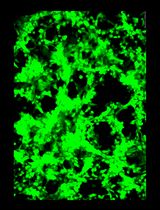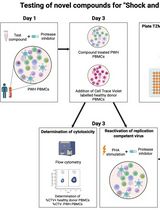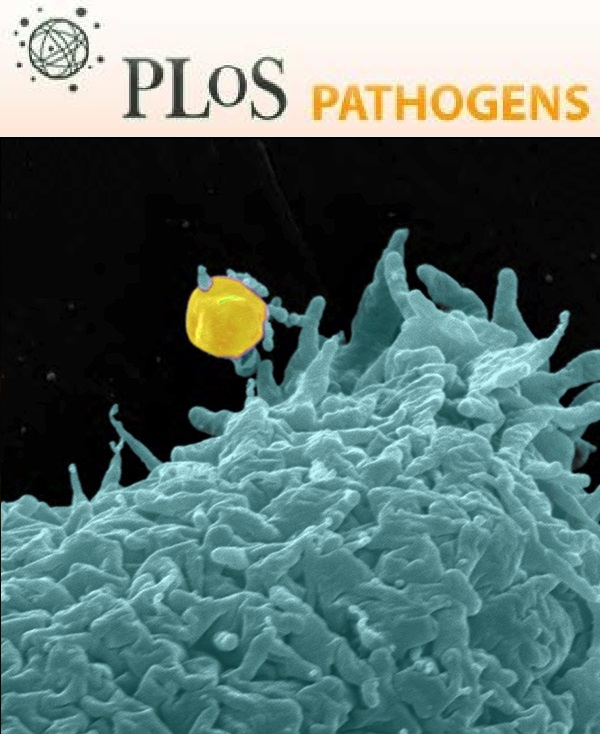- Submit a Protocol
- Receive Our Alerts
- Log in
- /
- Sign up
- My Bio Page
- Edit My Profile
- Change Password
- Log Out
- EN
- EN - English
- CN - 中文
- Protocols
- Articles and Issues
- For Authors
- About
- Become a Reviewer
- EN - English
- CN - 中文
- Home
- Protocols
- Articles and Issues
- For Authors
- About
- Become a Reviewer
Purification of Herpesvirus Virions and Capsids
Published: Vol 4, Iss 15, Aug 5, 2014 DOI: 10.21769/BioProtoc.1193 Views: 17883
Reviewed by: Kathrin SutterFanglian He

Protocol Collections
Comprehensive collections of detailed, peer-reviewed protocols focusing on specific topics
Related protocols

General Maintenance and Reactivation of iSLK Cell Lines
Ariana C. Calderón-Zavala [...] Ekaterina E. Heldwein
Jun 5, 2025 1774 Views

Inducible HIV-1 Reservoir Reduction Assay (HIVRRA), a Fast and Sensitive Assay to Test Cytotoxicity and Potency of Cure Strategies to Reduce the Replication-Competent HIV-1 Reservoir in Ex Vivo PBMCs
Jade Jansen [...] Neeltje A. Kootstra
Jul 20, 2025 2393 Views

Assembly and Mutagenesis of Human Coronavirus OC43 Genomes in Yeast via Transformation-Associated Recombination
Brett A. Duguay and Craig McCormick
Aug 20, 2025 2842 Views
Abstract
This protocol was designed for large-scale purification of herpesvirus particles by cell culture. Virions and capsids are isolated from extracellular culture media and cell nuclei, respectively. Purity and concentration of the purified samples are usually sufficient for structural studies with cryo electron microscopy and cryo electron tomography. The protocol should also be generally suitable for purifying herpesvirus virions and capsids for other types of studies.
Keywords: Virus purificationMaterials and Reagents
- Herpesvirus infected cells (e.g., Vero cells for herpes simplex virus culture, MRC5 cells for human cytomegalovirus culture)
- PBS (pH 7.4)
- Sucrose
- NP-40
- Dry ice
- Dulbecco’s modified eagle medium (DMEM)
- Fetal bovine serum (FBS)
- Herpesvirus culture media (see Recipes)
Equipment
- Laminar flow hood
- Centrifuge with cool function
- Ultracentrifuge
- Ultra-Clear 38.5 ml tubes (fit in SW28 rotor) (Beckman Coulter, catalog number: 344058 )
- Ultra-Clear 13.2 ml tubes (fit in SW41 rotor) (Beckman Coulter, catalog number: 344059 )
- KimwipesTM tissue paper
- Tweezers
- Gradient master (Biocomp Instruments, catalog number: 107-201M )
- Flashlight
- Vortex
- 37 °C water bath
- Syringe with 23 gauge hypodermic needle
Procedure
- Purify virion from herpesvirus culture media
- When the virus culture is ready for harvest, collect the culture supernatant in a laminar flow hood. We usually work with 20-30 175 cm2 flasks of cell culture for each batch of purification.
Note: From this step on, always keep sample on ice; all centrifuge should be done at 4 °C.
- Spin 15 min at ~10,000 x g to remove cell debris (8,000 rpm with Beckman Coulter JA-14 rotor). For large volume (e.g., over 200 ml for each bottle), may need to spin longer or repeat once to completely clarify the media.
- Collect the supernatant from last step, ultracentrifuge at ~80,000 x g for 1 h to pellet the virion (21,000 rpm with SW28 rotor).
Note: Even for smaller virus (e.g., Dengue virus around 50 nm), ultracentrifuge at 80,000 x g for 1 h is enough to pellet down most of the virus particles. Centrifuge at higher speed or for longer time may cause structural damage to some of the virus particles, or make the pellet hard to be resuspended.
- Dump the supernatant. Use a KimwipesTM tissue paper winded around a pair of tweezers to completely wipe out media on the inner wall of the tube. Add 100 µl PBS for each tube, incubate on ice overnight or for at least 2 h, then resuspend the pellet by pipetting.
Note: Soaking the pellet in solution for hours helps to loosen the pellet and makes it easier to be completely resuspended.
- Make a continuous density gradient in SW41 centrifuge tube with ~5 ml each 15% and 50% (w/v) sucrose solution in PBS, using the Gradient Master machine. Load the resuspension on top of the density gradient. Use another tube with sucrose solutions for balance.
Note: It’s better to load less than 2 ml (at most 3 ml) sample for each density gradient tube. Too large volume of sample may lead to a smeared band in the next steps.
- Spin at 80,000 x g for 1 h (21,000 rpm with SW41 rotor).
- In a dark room, shine a flashlight on top of the density gradient tube to clearly see the virus band and then mark the position. A good virus band should be a shiny, milky line with clear-cut interface. For herpesvirus virion purification, sometimes two bands can be identified. Normally, the upper band contains more virions with empty A- or B-capsids, while the lower band contains more dense bodies. But majority of particles in both bands are virions with DNA-filled C-capsids.
- In a laminar flow hood, remove the gradient solution above the virus band with 1 ml pipette, then collect the band with new pipette. Try to keep the volume as small as possible to avoid impurities above and below the band. For low concentration samples, if no band identified, aliquot the gradient into 2 ml each.
- Dilute the virus band (or each 2 ml aliquot) with PBS in SW41 tube to the full volume of the tube. Spin at 80,000 x g for 1 h to pellet the purified virus.
- Dump the supernatant. Use KimwipesTM tissue paper to clean inner wall of the tube as in step A4. Add 10-30 μl (depending on size of the pellet and desired final concentration) PBS, incubate on ice for at least 2 h or overnight, and then resuspend the pellet by pipetting.
- If no band identified and aliquots collected in step A7, check each sample with negative-staining Electron Microscopy to figure out which one has virus particle.
Note: For herpesvirus, it’s hard to distinguish virion from dense body with negative staining EM. Mix 2 μl of the sample with equal volume of 1% NP-40 in PBS to partially dissolve the virus envelope before negative staining, then viral capsid in the virion will be stained to have a spiky appearance which is easy to identify.
- When the virus culture is ready for harvest, collect the culture supernatant in a laminar flow hood. We usually work with 20-30 175 cm2 flasks of cell culture for each batch of purification.
- Purify viral capsid from herpesvirus infected cells
- Harvest herpesvirus-infected cells when reaching 90% cytopathic effect. We normally start with 15-20 175 cm2 flasks of cell culture.
- Pellet cells by centrifuge at 1,000 x g at 4 °C for 10 min. Remove the supernatant.
- Wash the pellet with 30 ml pre-chilled PBS and centrifuge again at 1,000 x g at 4 °C for 10 min. Remove the supernatant.
- Loosen the pellet by vortexing at half maximum speed for 5 sec. Resuspend the pellet with 30 ml 0.5% (w/v) NP-40 in PBS by pipetting and incubate the mixture on ice for 5 min.
- Centrifuge at 1,000 x g at 4 °C for 10 min. Remove the supernatant.
- Resuspend the pellet (containing cell nuclei) in 30 ml PBS and lyse by three cycles of freezing (dry ice or -80 °C, 10 min), thawing (37 °C water bath, 3-4 min), and 1 min vortexing.
- Keep the lysate on ice. Pass the lysate through a 23 gauge hypodermic needle for at least 20 times.
- Add 10% (w/v) NP-40 in PBS to the lysate to make final concentration of 2% NP-40. Incubate at 4 °C overnight.
- Centrifuge at 1,500 x g at 4 °C for 5 min to remove large debris.
- Take 5 ml 25% sucrose (w/v in PBS) in SW28 tube, and then inject 5 ml 50% sucrose (w/v in PBS) with a syringe to the bottom of the tube, to make a double-layer sucrose cushion. Gently load the lysate (supernatant containing capsids) on the cushion with pipette and centrifuge at 80,000 x g for 1 h.
- Collect the band at interface of the two sucrose layers. Dilute with PBS for two to three times, load on a continuous 15% to 50% (w/v in PBS) sucrose density gradient. Load less than 2 ml sample for each gradient tube; use multiple tubes if have more sample. Centrifuge at 80,000 x g for 1 h.
- Collect the band of capsid, dilute with PBS in SW41 tube to full volume of the tube, centrifuge at 80,000 x g for 1 h to pellet the capsid. For herpesvirus capsid purification, sometimes three bands can be identified. They contain A-, B-, and C-capsids for the top-, middle-, and bottom-band respectively.
- Dump the supernatant, wipe out all liquid on the inner wall of the tube with KimwipesTM tissue paper and tweezers. Add 10-30 μl PBS, incubate on ice for at least 2 h or overnight, and then resuspend the pellet by pipetting.
- Check purity and concentration of the sample by negative staining electron microscopy or cryo electron microscopy.
- Harvest herpesvirus-infected cells when reaching 90% cytopathic effect. We normally start with 15-20 175 cm2 flasks of cell culture.
Recipes
- Herpesvirus culture media
Dulbecco’s modified eagle medium with 10% fetal bovine serum
Acknowledgments
This protocol was adapted from our previously published paper Dai et al. (2013). Citation of this original paper is also encouraged when referencing the protocol. This work was supported by a grant from the National Institutes of Health (NIH) to Z. Hong Zhou (AI069015).
References
- Dai, X., Yu, X., Gong, H., Jiang, X., Abenes, G., Liu, H., Shivakoti, S., Britt, W. J., Zhu, H., Liu, F. and Zhou, Z. H. (2013). The smallest capsid protein mediates binding of the essential tegument protein pp150 to stabilize DNA-containing capsids in human cytomegalovirus. PLoS Pathog 9(8): e1003525.
Article Information
Copyright
© 2014 The Authors; exclusive licensee Bio-protocol LLC.
How to cite
Readers should cite both the Bio-protocol article and the original research article where this protocol was used:
- Dai, X. and Zhou, Z. H. (2014). Purification of Herpesvirus Virions and Capsids. Bio-protocol 4(15): e1193. DOI: 10.21769/BioProtoc.1193.
- Dai, X., Yu, X., Gong, H., Jiang, X., Abenes, G., Liu, H., Shivakoti, S., Britt, W. J., Zhu, H., Liu, F. and Zhou, Z. H. (2013). The smallest capsid protein mediates binding of the essential tegument protein pp150 to stabilize DNA-containing capsids in human cytomegalovirus. PLoS Pathog 9(8): e1003525.
Category
Microbiology > Microbial cell biology > Cell isolation and culture
Microbiology > Microbe-host interactions > Virus
Cell Biology > Cell isolation and culture > Cell growth
Do you have any questions about this protocol?
Post your question to gather feedback from the community. We will also invite the authors of this article to respond.
Share
Bluesky
X
Copy link









